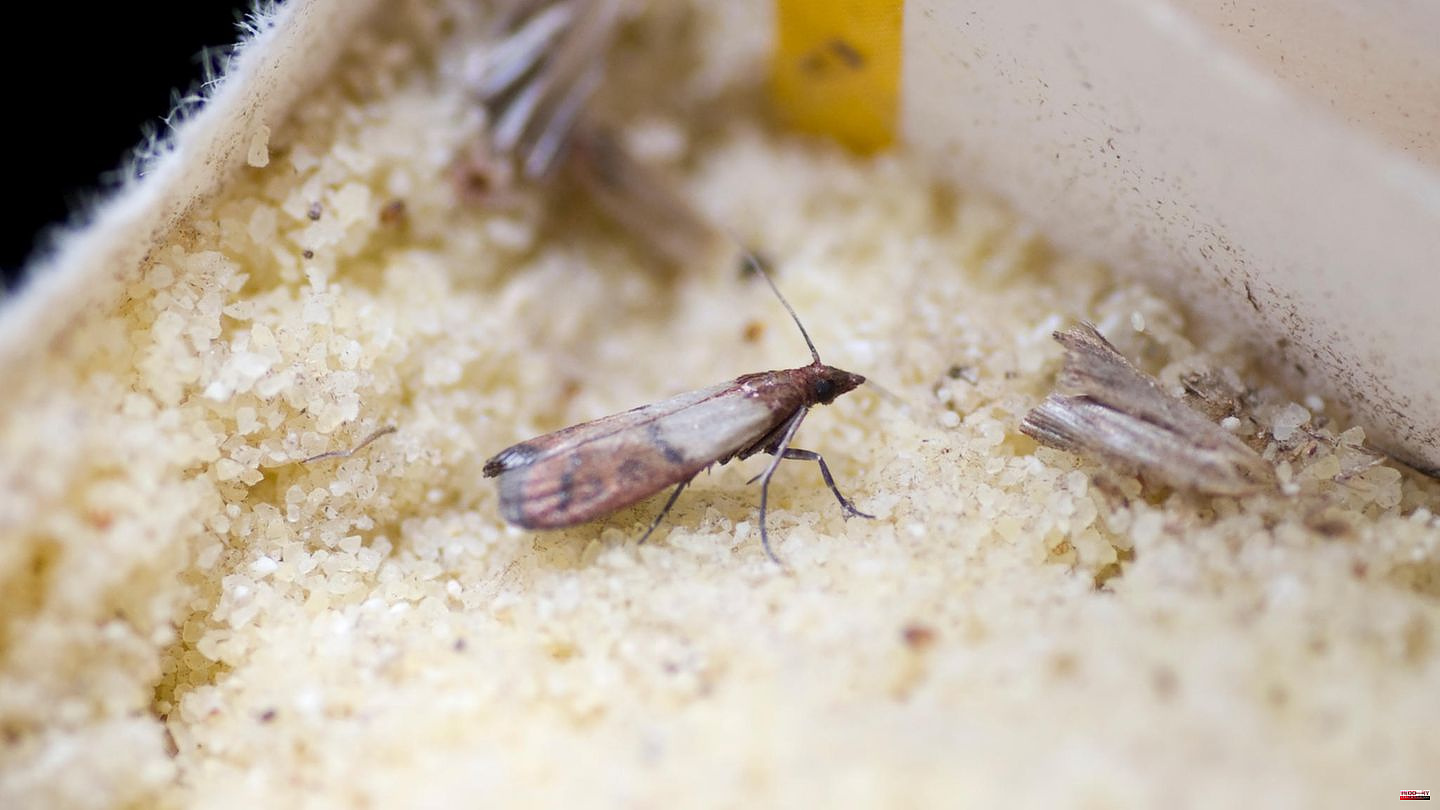While textile moths prefer to stay in closets, food moths prefer kitchens or pantries. From a purely visual point of view, the two moth species differ only slightly from one another: both are nocturnal and only a few millimeters in size, have a brownish color and can fly. The biggest difference is that clothes moths only damage textiles, while food moths - more specifically, their legacies - are harmful to human health. In addition, both populations multiply rapidly if the infestation is not recognized in time and countermeasures are not taken. Depending on whether you want to fight food moths or clothes moths, different (home) remedies and procedures are recommended. We'll tell you which ones.
Once a female food moth has been fertilized, it can only fly short distances. Therefore, it usually crawls or hops along the walls to move forward in search of a suitable nesting site. Once she has found a suitable nest, preferably in a dry and dark place, she can lay up to 500 eggs - in food supplies kept in easily accessible paper and plastic bags: such as cereals or nuts, flour or rice, legumes or seed. Even tea and chocolate are on the menu.
They crawl through the smallest openings, but can also eat their way through closed packaging. The larvae then hatch and contaminate your supplies. You will recognize the infestation at the latest when the thread-like webs that hold your food together like glue catch your eye. Since the larvae are diurnal, they could (in theory) also be an important indicator. However, due to their whitish coloration, they are hardly noticeable to the naked eye on white walls. Therefore, you should check all supplies.
They are almost magically attracted to the smell of animal fibers - such as wool, fur and leather. But sweat residues on the textiles also attract clothes moths. Nevertheless, they are not the reason for the circular holes in the clothes, but their larvae. They hatch just two weeks later, after the female has laid her up to 250 eggs in a dark and dry place. Although they pupate after just three months and then live for just under three weeks, this is still enough time to do a lot of damage in the closet.
But why do the larvae actually prefer animal hair? The explanation is very simple: the keratin it contains promotes growth. For this reason, they usually do not eat textiles that are made of purely plant-based or synthetic materials (such as cotton or linen). Because they literally hit them in the stomach - and cannot be digested by the larvae. And since clothes moths are in high season from May to September, it's easy for them to get into your home through an open window. That's why you must always be vigilant.
How to deal with food moths:
It is then important that you clean the infested cabinets with a vacuum cleaner - do not leave out any cracks. Afterwards it is also useful to wipe all surfaces with vinegar water. Hard-to-reach corners can be cleaned with a hair dryer, as the animals do not tolerate heat.
To make sure you've caught all the moths, set up a pheromone trap with sex attractants. The small cardboard strips are covered with an adhesive film on which the male insects stick. Keep windows closed to avoid attracting moths from outside.
Alternatively, you can also use a natural enemy of the food moth: parasitic wasps are hardly visible to the naked eye, but have the property of planting their eggs in the moth eggs - so that the larvae die. If there are no more moths, the parasitic wasps disappear.
Another tip: Keep your kitchen clean, as crumbs lying around can already attract food moths. And when you go shopping, make sure that none of the packaging has holes - because most of the food infested with eggs or larvae you bring home with you from the supermarket. And not by flying through an open window.
How to get rid of clothes moths:
If you want to do without the chemical club, you can also use natural remedies to fight the moths. First and foremost, these include lavender sachets: While people find their scent very pleasant, clothes moths do not like the smell.
So-called moth rings made of cedar wood are just as effective and effective against the voracious moths. Their scent keeps the insects away and also absorbs foreign odors and moisture. If they are sanded regularly, they will last for several months.
Wash all textiles that may have been infested with clothes moths at 60 degrees. On the other hand, delicate fabrics (such as wool, leather or silk) should be stored in a plastic bag in the freezer for several days. Since the moths do not tolerate heat or cold well.
One last tip: If you store clothes in the basement or in the attic, clothes moths have an easy time of it. For this reason it is advisable to wrap the textiles in newspaper - as the insects have been shown to dislike printer's ink. It also makes sense to check the boxes regularly for infestation.
This article contains so-called affiliate links. There is more information here.












